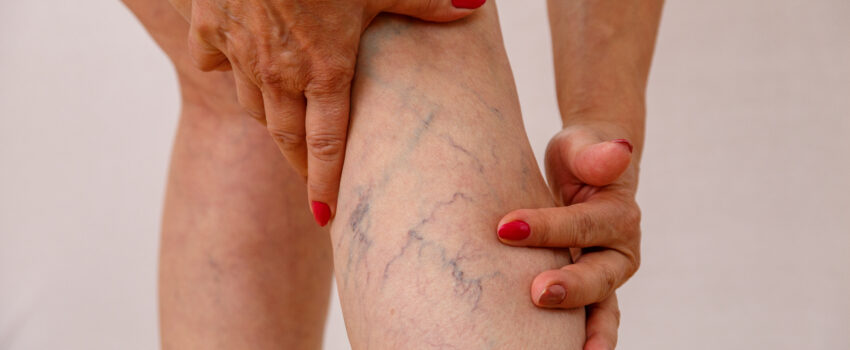Leg pain can put a serious damper on a person’s quality of life. For a number of people, leg pain is caused by painful veins known as varicose veins. Read on to learn more about this common condition and how the specialists at North Shore Vein Center, Long Island, can help.
What Are Varicose Veins?
Varicose veins are blood vessels that have become bulging, lumpy, or twisted. Typically, a vein is a smooth, thin, tube-like structure. However, when blood flow through a vein slows or pools, its form can become distorted. Varicose veins typically occur superficially, just underneath the surface of the skin. However, varicosities can also occur in deeper leg veins as well.
What Causes Varicose Veins in the Leg?
To understand varicose veins, it’s important to first define a vein. The body has two major blood vessel types—veins and arteries. Arteries carry blood away from the heart, and veins carry blood back to the heart. The pressure in veins is lower than the pressure in arteries, and leg veins must work against gravity to return blood back to the heart.
Unlike arteries, veins contain one-way valves that help aid the return of blood back to the heart and prevent backflow. However, when these valves become stressed or damaged, blood can pool and stretch the veins, causing varicosities.
What Can Cause Painful Leg Veins?
Painful leg veins stem from the changes in the vein walls, vein valves, and surrounding tissue. The pooling of blood and the stretching of the vein can cause symptoms. Having a family history of varicose veins can increase a person’s likelihood of developing the condition. Other risk factors include pregnancy, a sedentary lifestyle, prolonged sitting or standing activities, trauma to the veins, or being overweight or obese.
What Are Typical Symptoms of Varicose Veins in the Leg?
While each person may experience painful leg veins differently, some common symptoms of varicose veins include:
- A dull aching or heaviness of the legs
- Color change of the veins or the skin surrounding the veins
- Visible vein bulging or swelling
- Leg cramping, especially at night
- Skin itching or burning
Complications of varicose veins can include poor wound healing time, skin ulcers, bleeding, blood clots, or leg swelling.
What Are Some Treatments?
Leg vein pain can be managed with a number of effective treatment strategies. To treat varicose veins, healthcare providers may first recommend lifestyle changes. These include maintaining a healthy weight, which can help reduce the pressure on vein valves and improve blood flow throughout the body.
Other lifestyle change strategies include:
- Increasing physical activity to encourage the leg muscles to help return blood flow to the heart
- Avoiding sitting or standing for long periods
- Wearing compression stockings
- Wearing supportive footwear and avoiding high heels
When the above lifestyle measures are not enough to help with symptoms, a vein treatment procedure may be indicated. At North Shore Vein Center, Dr. Mark Schwartz, MD, FACS, RPVI, offers the latest minimally invasive vein treatments using state-of-the-art equipment like endovenous radiofrequency ablation, endovenous laser ablation, and the VeinGogh™ ohmic thermolysis system.
How to Learn More About Leg Vein Pain
Varicose veins can be uncomfortable, but leg vein pain treatment can help manage symptoms and improve the appearance of the legs. To learn more about Dr. Schwartz and the North Shore Vein Center, a nationally recognized center for excellence in New Hyde Park, New York, contact us today.

